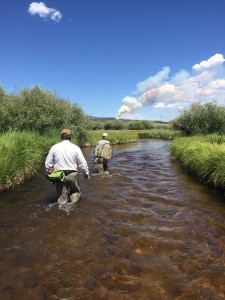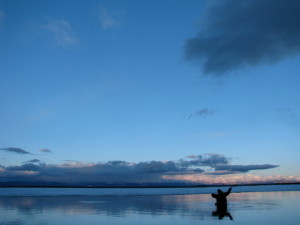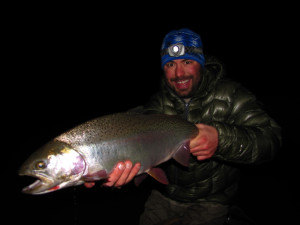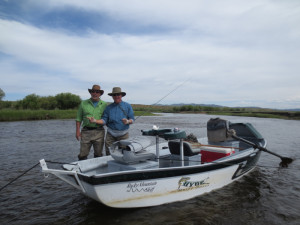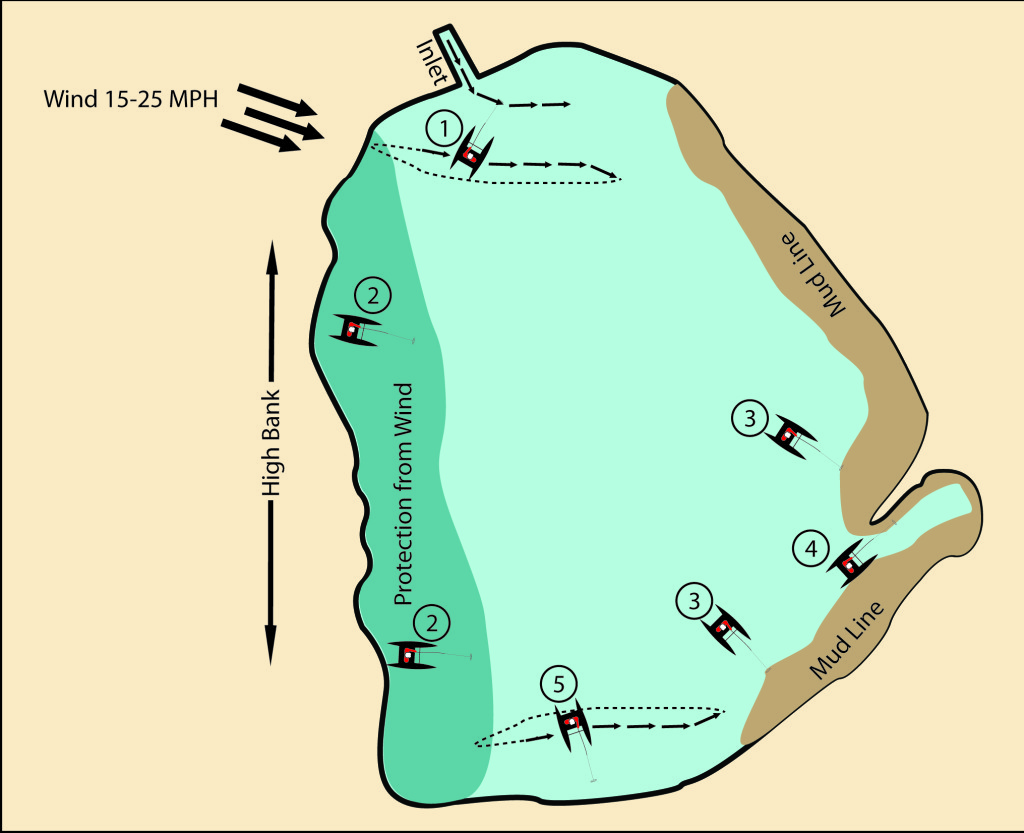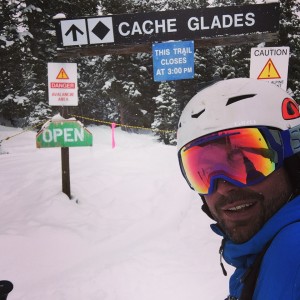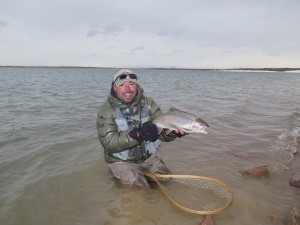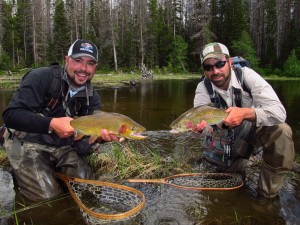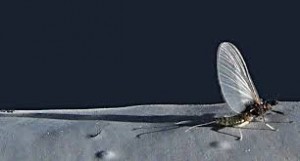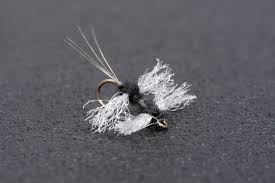To Tungsten or not to Tungsten, that is the question? by Tim Drummond
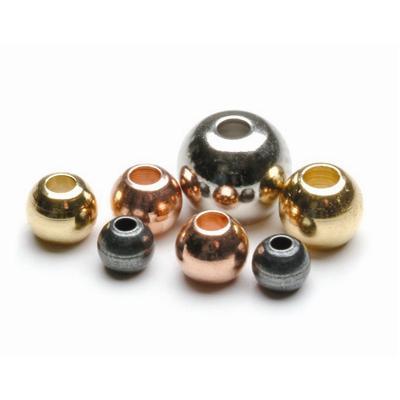 Tungsten, a great innovative material brought to the fly tying world enabling us to get nymphs deeper, faster, and in the zone quickly. Almost twice as heavy as lead, this stone packs a lot of weight in small proportions. Tungsten, also known as wolfram, is a chemical element with symbol W and atomic number 74. The word tungsten comes from the Swedish language tung-sten, which directly translates to heavy stone; (Wikipedia) To put into perspective of how dense this stone is, a small car (Honda Accord) weighs 3400 lbs. without any gas or people inside. The same weight would roughly be 2 cubic feet of Tungsten, that’s dense!
Tungsten, a great innovative material brought to the fly tying world enabling us to get nymphs deeper, faster, and in the zone quickly. Almost twice as heavy as lead, this stone packs a lot of weight in small proportions. Tungsten, also known as wolfram, is a chemical element with symbol W and atomic number 74. The word tungsten comes from the Swedish language tung-sten, which directly translates to heavy stone; (Wikipedia) To put into perspective of how dense this stone is, a small car (Honda Accord) weighs 3400 lbs. without any gas or people inside. The same weight would roughly be 2 cubic feet of Tungsten, that’s dense!
In recent years we have seen a surge in sales of Tungsten flies and patterns being tied on jig hooks with slotted tungsten beads. The popularity of the jigged tungsten fly has definitely taken hold and offers 2 big differences versus tungsten flies tied on traditional nymph hooks. The difference between the 2 styles of flies is simply in the hook and bead. The same pattern of fly can be tied on both kinds of hooks and will only have differences in proportions because of shank length, gape, and size. When looking at the difference in beads specifically, slotted versus drilled, there is one major factor, the weight. If you look at a slotted tungsten bead versus a standard drilled tungsten bead you will notice the difference in the way the bead is manufactured so they can be mounted on standard hooks and jig hooks. On the slotted bead, the manufacturing process allows for more tungsten in the bead simply because the bead does not need to be machined as much for mounting on a jig hook. On a drilled bead there is actually more tungsten removed during manufacturing to allow for mounting to traditional hooks. So the result on 2 beads the same size, one being slotted, the other being standard, is more weight in the slotted bead due to more tungsten in the bead. Let’s move on to fishing with this heavy stuff.
We’ve all heard the sayings about fishing with weight, and they all weigh true, no pun intended. “If your not ticking bottom you’re not deep or heavy enough”, “if you’re not picking moss off your flies every so often you’re not deep or heavy enough”, and my favorite saying “the difference between a good fisherman and a great fisherman is 1 split shot”. All true and great advice for nymphing flies, but let’s not get stuck on this idea. They all have their place and time, and to be better fisherman we need to recognize what nymphs to use and when, weighted and non-weighted. Below are some examples of when to use certain nymphs and why.
Tungsten Flies:
1. Heavy White Water: Using a tungsten fly can be the difference between catching and not catching when fishing heavy oxygenated white water. As the water heats up trout will literally put their noses in the heads of crashing pools and pockets not only to cool themselves off, but to also feed on the many nymphs currents will churn up. As a matter of fact trout need to eat often in these currents to keep their energy levels up. Using a tungsten fly in this situation allows for the fly to drop instantly into the trout’s zone which is imperative because sometimes these fast drifts will only last for a few seconds.
2. Fish laying on bottom: Fishing during very cold and hot conditions can mean nymphing deep. During cold non-hatch conditions trout will seek deeper hides so they don’t have to fight current and to hold for winter where they will come out every so often when there is a hatch to sip on bugs. When there are no hatch conditions trout still need to eat in order to sustain energy. During these times fish will cruise the bottom of their hide looking for any bottom clinger bugs, i.e. caddis, stones, crane fly larva, dragon nymphs, mayfly nymphs, etc. The same can be said for fish seeking refuge during hot conditions, except the trout are there to cool off and stay in the shade which structure and boulders provide. Using a heavy tungsten bug to reach these fish is key. When tossed in the hole with a proper mend the fly will dive to the bottom, and because of the weight will continue to tick along the bottom keeping you in the zone.
Brass Beaded Flies:
1. Suspended Fish in Fast Water: In key feeding times trout will suspend in the water column and feed often to sustain energy levels. During this time I sometimes like to use a lighter beaded fly for 2 reasons, attraction, and giving life to the fly. When thrown into a fast hole with a proper mend a brass beaded fly will not sink as fast and will travel through a suspended fish’s zone. The lighter fly will also have more life to it because the current makes the fly bounce and jiggle around just like a real insect in fast water. Yes, you can still use a tungsten fly to reach suspended fish but you will need to be precise on the depth. When cast the fly will drop and fish to the exact depth you set because of the weight of the tungsten. The tungsten fly will also travel on a level plane and will not bounce and jiggle around in the current because of the weight. These minor differences can determine whether a trout eats your fly or not. Next time you’re out in this situation watch trout behavior and determine if you need to fish a fly with more action, or if you need to hone in on a specific depth the trout are feeding at. A dead giveaway is if you see flashes under the surface, then use a lighter beaded fly with action. If fish are suspended and sitting still, using a tungsten nymph will help deliver the fly on a level plane where they are feeding.
Unweighted Flies:
1. Fish suspended just under the surface: When fish are in this position they are actively feeding on top or just within a few feet of the water column. This is a key time to fish an un-weighted fly with a dead drift, or by swinging flies to the fish. Usually when fish are suspended just under the surface they will be in calmer riffles or slicks to preserve energy and steadily sip the rivers offerings. If you try to use a weighted fly for this situation you will find the fly drops below the feeding level by the time it gets to the fish, as well as potentially spooking the fish as the bead makes a splash and plunk in the water. It’s also very important to stop and observe feeding fish whenever you can. You can learn so much about how trout feed by watching before you decide to fish to them. For example, shallow suspended fish are often taking surface flies or flies emerging from the stream bed bottom to top. The proper presentation for this situation is going to be swinging the flies or bringing them up from the bottom to imitate an emerging insect. This can be done 2 ways. One way is to cast well above the fish, make a mend, let the wet fly fall to the feeding level, and tighten the line before it reaches the fish swinging it in front of him. Another technique to use if the un-weighted flies are not reaching the level of the fish is to add a tiny split shot above the fly which allows it to drop but still allows for the fly to flutter and bounce about just like a natural insect. Both of these techniques will give the presentation of a fly emerging bottom to top versus heavy tungsten flies which present the fly sinking top to bottom.
Tungsten no doubt has changed the fly fishing world for the better, giving us so much more opportunity to reach fish in fast water without packing on the split shot. With that being said it’s so easy to open your fly box and forget about the brass bugs and un-weighted nymphs and reach for the tungsten. But remember, those flies play an important role as well and they are in your box for a reason. Next time you’re out and getting ready to rig on the river, stop and observe the fish. Look where they are laying, are they suspended, do you see flashes under the surface, are they on bottom? Then ask yourself the question, to tungsten or not to tungsten?

